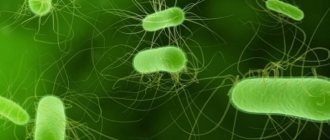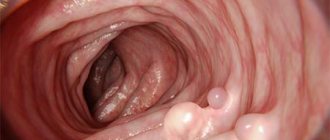traveler's diarrhea
diarrhea
nausea
diarrhea
metaprebiotics
The term traveler's diarrhea refers to a disorder that develops more often when infectious pathogens enter the gastrointestinal tract. This condition occurs more often in people who have changed climatic and geographical zones. The characteristic symptoms of traveler's diarrhea develop in people during the first days of being outside the country of residence.
This is especially true for countries with a tropical climate. This disease occurs everywhere, but most often it is encountered by people who have visited countries in Latin America, Africa and Asia. The maximum incidence of traveler's diarrhea is observed in Canada, the United States of America, Japan, New Zealand, Australia and Eastern European countries. The peak incidence of traveler's diarrhea occurs during the rainy season and summer.
How to Prevent Traveler's Diarrhea
The hot climate of exotic countries increases the chances of eating spoiled or low-quality food or contaminated water. This is the main cause of traveler's diarrhea, which causes quite serious discomfort. Even when episodes of diarrhea are not repeated or debilitating, they can significantly disrupt a trip.
The risk group mainly includes people who prefer to vacation in warm countries, and in this section you will get acquainted with recommendations for maintaining health on the road.
Up to contents
Sources
- Seo H., Garcia C., Ruan X., Duan Q., Sack DA., Zhang W. Preclinical characterization of immunogenicity and efficacy against diarrhea from MecVax, a multivalent enterotoxigenic E. coli vaccine candidate. // Infect Immun - 2022 - Vol - NNULL - p.; PMID:33875477
- Kantele A., Lääveri T. Extended-spectrum beta-lactamase-producing strains among diarrheagenic Escherichia coli-prospective traveler study with literature review. // J Travel Med - 2022 - Vol - NNULL - p.; PMID:33834207
- Carroll CJ., Hocking DM., Azzopardi KI., Praszkier J., Bennett-Wood V., Almeida K., Ingle DJ., Baines SL., Tauschek M., Robins-Browne RM. Re-evaluation of a Neonatal Mouse Model of Infection with Enterotoxigenic Escherichia coli. // Front Microbiol - 2022 - Vol12 - NNULL - p.651488; PMID:33815340
- Dembiński Ł., Stelmaszczyk-Emmel A., Sznurkowska K., Szlagatys-Sidorkiewicz A., Radzikowski A., Banaszkiewicz A. Immunogenicity of cholera vaccination in children with inflammatory bowel disease. // Hum Vaccin Immunother - 2022 - Vol - NNULL - p.1-7; PMID:33794737
- Wendt S., Beier D., Paquet D., Trawinski H., Fuchs A., Lübbert C. Medical Advice for Travelers. // Dtsch Arztebl Int - 2022 - Vol118 - NForthcoming - p.; PMID:33597073
- Li X., Bai J. A Ridesharing Choice Behavioral Equilibrium Model with Users of Heterogeneous Values of Time. // Int J Environ Res Public Health - 2022 - Vol18 - N3 - p.; PMID:33572809
- Leangapichart T., Hadjadj L., Gautret P., Rolain JM. Comparative genomics of two Shewanella xiamenensis strains isolated from a pilgrim before and during travels to the Hajj. // Gut Pathog - 2022 - Vol13 - N1 - p.9; PMID:33563327
- Rongisch R., Bopp L., Fabri M., von Stebut E. [Parasitic dermatoses from abroad]. // Hautarzt - 2022 - Vol72 - N2 - p.163-174; PMID:33481049
- Worby C.J., Earl AM., Turbett SE., Becker M., Rao SR., Oliver E., Taylor Walker A., Walters M., Kelly P., Leung DT., Knouse M., Hagmann SHF., Ryan ET., LaRocque RC. Acquisition and Long-term Carriage of Multidrug-Resistant Organisms in US International Travelers. // Open Forum Infect Dis - 2022 - Vol7 - N12 - p.ofaa543; PMID:33409326
Geography of distribution
Staying in some countries significantly increases the risk of diarrhea. The most unfavorable ones regarding the risk of developing gastrointestinal disorders are:
- Asian countries
- African countries
- South American countries
On our website you can familiarize yourself with the map of “Hot Spots” for travel (the safest countries are marked in green, the most dangerous in terms of the spread of intestinal infections in red):
Up to contents
Prevention of traveler's diarrhea
Diet rules while traveling and following some restrictions will help you avoid diarrhea:
- for drinking, making edible ice and brushing your teeth, use water of which you are confident - boiled, bottled, purified with special antiseptics;
- Check drinks sold in cans and bottles for integrity of packaging and expiration date;
- Try not to swim in natural bodies of water where the water may be contaminated with bacteria. When swimming in any body of water and even in the shower, try not to swallow the water;
- eat heat-treated food;
- Dispose of food left over after eating and do not store or reheat it. Diarrhea on the road often occurs due to improper storage of food without monitoring their expiration dates;
- Wash your hands thoroughly and using detergents before eating.
Up to contents
What can you eat and drink without the risk of intestinal upset?
Don't drink drinks prepared on the streetcarbonated drinks in sealed containers;
- hot drinks (coffee, tea);
- fruits peeled by you personally;
- hot dishes, well-done meat.
Treatment of traveler's diarrhea
Travelers' diarrhea is dangerous because when it lasts for a long time, the body loses fluid and minerals necessary for proper water-salt metabolism. In order to prevent deterioration of well-being and speed up recovery, it is recommended to take the following actions in case of diarrhea:
- Drink enough fluid to compensate for fluid lost from diarrhea. Drink large quantities of bottled and boiled water. Children, elderly people and those with weakened immune systems should take special products that restore water-salt balance;
- nutrition while traveling is an important factor, so exclude drinks containing caffeine (tea, coffee, Coca-Cola, etc.), replace yeast baked goods with crackers and toast. Also exclude “heavy” foods from your diet - fried, hot, spicy, fatty foods. Include easily digestible foods in your diet - rice, whole grain bread, puree soups, which will help restore normal digestive processes. As you feel better, gradually add baked potatoes and other simple baked or boiled foods to your diet;
- It is important to stop diarrhea in order to stop the loss of water and nutrients: IMODIUM® Express will help you with this - an over-the-counter drug that restores intestinal function and normalizes its functions. IMODIUM® Express takes effect within one hour after you take it.
- Traveler's diarrhea lasting more than 24 hours, with fever and the presence of blood and/or mucus in the stool requires urgent medical attention.
Up to contents
Diseases accompanied by diarrhea bring a lot of trouble to people traveling on business trips or on vacation to developing countries or other geographical and climatic zones. Every year more than 500 million people leave one country for another. The risk of diarrhea is largely determined by the country of destination. In a survey of 20 thousand European tourists returning from various regions of the world, three risk zones were identified [6, 57]. Travel to Latin America, Africa, Asia and the Middle East poses the highest risk, where the incidence of diarrhea reaches 20–50%. A moderate risk is established for the countries of Southern Europe, Israel and parts of the Caribbean islands (10–20%). Staying in Canada, the USA, Northern Europe, Australia and New Zealand is associated with a low risk (less than 8%). The infectious nature of diarrhea is certain, although intestinal pathogens are not always identified. This may be why outbreaks of diarrhea among travelers sometimes appear under unusual but memorable names - “Aden gut”, “Turkish rush”, “Hong Kong dog”. An outbreak of the disease associated with giardiasis infection among tourists in Russia received the sonorous and unexpected name “Trotsky”.
The incidence of traveler's diarrhea (TD) depends on national origin, length of stay in the country, purpose of travel, age, etc. Thus, during an outbreak of infectious diarrhea among participants at an international conference in Mexico in 1968, the majority of cases were residents of the United States and North America. Europe (36%), while there were significantly fewer representatives of the local population (2%) [38]. Prolonged stay in a tropical country confers increased resistance to DP, although the high risk persists for two years [55]. Frequent short visits to high-risk countries are unproductive in this regard. Vulnerable to DP are young people aged 20–29 years who neglect dietary recommendations. DP is always associated with the consumption of fecal-contaminated foods and beverages. Hazardous products are thermally unprocessed vegetables, fruits with peels, meat, seafood, unpasteurized milk and dairy products, unchlorinated or unboiled water. Carelessness is punishable by the development of diarrhea. Even the most conscientious tourists are sometimes unable to resist temptation. An analysis of the behavior of tourists from Switzerland shows that 2/3 of them already in the first days of their stay ate unsafe food (salads) and drank juice from cubes [36]. Young children, elderly people, people with nutritional and immune deficiencies, hypoachlorhydria, and those receiving acid inhibitors are more susceptible to intestinal infections.
Microbiology
Despite the efforts of doctors around the world, infectious diarrhea remains a common cause of death, ahead of gastrointestinal (GIT) tumors, peptic ulcers and inflammatory bowel diseases. This is especially true for children under the age of five. In developing countries, diarrheal diseases directly or indirectly cause the death of one child every 10 seconds. Preschool children experience up to seven episodes of diarrhea annually. Although the epidemiological situation in developed countries is certainly better, even here the success in the fight against intestinal infections is not very impressive. Thus, in the UK, one in five residents suffers an acute intestinal infection every year, which is not always registered by official authorities [64]. In England and Wales, the incidence of such infections has stabilized since mid-1990, but is still quite high. The incidence of salmonellosis has been reduced through vaccination of poultry, but the steady increase in infections caused by Campylobacter jejuni has only now been stopped. The frequency of infections caused by Escherichia coli, Giardia intestinalis, and Cryptosporidium parvum does not decrease.
A number of studies have isolated specific microbial pathogens from the feces of patients with DP [6, 17, 29, 58]. Laboratory diagnostics in these studies were not perfect, but still provide insight into the role of certain pathogens in the development of the disease. The highest proportion belongs to enteropathogenic, adhesive or invasive strains of E. coli - 55–75%, followed by Shigella and Campilobacter - 10% each, followed by other microorganisms (Table 1). The frequency of detection of pathogens is determined by many factors - the region where the diarrhea outbreak occurred, the time of year and, finally, a targeted search for the pathogen. For example, Campylobacter strains were detected in 40% of cases of diarrhea during the cold season [17, 42, 48]. Salmonellosis is much more common in Asia than elsewhere. A recently described protozoan parasite, Cyclospora cayetanensis, is responsible for DP in many developing countries, especially Nepal [55]. During targeted examination, rotaviruses are found in almost 10% of cases of DP [57, 58]. Mixed bacterial infections are also often found, for example in Mexico and Thailand (15–33%).
Pathogenesis of diarrhea
Infectious diarrhea occurs as a result of the following disorders of normal intestinal physiology:
- increased secretion of fluid and electrolytes, primarily in the small intestine
- decreased absorption of fluids, electrolytes, and some nutrients, which involves both the small and large intestines
The main cause of increased intestinal secretion is enterotoxins, which can cause changes in secretion without damaging enterocytes by changing the structure of tight intercellular junctions and enterocyte interaction with nervous, immune and endocrine factors. Cholera toxin releases serotonin from enterochromaffin cells, activating the neuronal reflex. As a result, the vasoactive intestinal polypeptide binds receptors on the basolateral membrane of epithelial cells and activates the intracellular adenylate cyclase-cAMP pathway [4, 10, 11]. Interneurons propagate secretory effects distally in the small and large intestines [3, 44].
Another mechanism causing diarrhea is impaired absorption, which occurs when the intestine is damaged [23]. This may be a consequence of impaired epithelial transport process in the small and/or large intestine due to the appearance of incompletely absorbed nutrients (osmotic diarrhea). The nature of damage to the intestinal wall can vary from discrete damage to the villous membrane due to the fixation of E. coli and Criptosporidium to an inflammatory response to invasive microorganisms. The latter cause the death of the epithelium, the synthesis of prostaglandins, leukotrienes and IL-8, which mobilizes neutrophils to the damaged area [22]. The latter release a powerful secretory agent - 5′-AMP.
In the clinic, both pathophysiological mechanisms coexist. Schigella, Salmonella, Campylobacter first produce secretory diarrhea in the small intestine in the early phase of the disease under the influence of enterotoxins, then penetrate the epithelium and cause ileocolitis. At this stage, there is loss of epithelial cells and impaired absorption of fluid and electrolytes.
Clinic and diagnostics
Infectious diarrhea can be clinically represented by one of three main syndromes:
- acute watery diarrhea that resolves within 5–10 days
- bloody diarrhea
- persistent diarrhea with or without signs of malabsorption
Clinical syndromes are of little use for verifying the causative agent of infection, although to a certain extent we can talk about the predominance of watery diarrhea in viral diseases, and bloody diarrhea in bacterial invasion. Persistent diarrhea lasting more than 14 days is equally characteristic of bacterial and protozoal infections, as well as helminth infections. Typically, DP does not begin immediately after the tourist’s arrival, but somewhat later – two to three days later. It is rarely long-lasting and is accompanied by frequent soft stools and multiple associated symptoms (nausea, vomiting, weakness, headaches, abdominal pain, fever, etc.). Only 2–10% of patients have fever, bloody stools, or both [6]. In 1–2% of travelers, diarrhea lasted 30 days or more [16].
Because most enteric infections resolve spontaneously in immunocompetent individuals, there is a strong argument that an etiological diagnosis is not necessary. This is partly true, but from the standpoint of public health such diagnostics seems relevant. In this regard, one should not neglect simple actions that are accessible to any doctor - taking an anamnesis and physical examination. For example, indications of a water source of an outbreak of diarrhea are characteristic of giardiasis and cryptosporidiosis. Painful joint swelling may accompany infections caused by Yersinia enterocolitica and Campylobacter. Hemolytic-uremic syndrome is a serious, although uncommon, complication of dysentery and infection caused by enterohemorrhagic strains of Escherichia. Itchy, migratory erythematous elements on the skin are characteristic of strongyloidiasis, and hepatomegaly is characteristic of schistosomiasis. Even if a physical examination does not resolve the issue of verifying the diagnosis, it is a mandatory element in assessing the severity of the patient’s condition and the degree of his dehydration. The latter is especially important for children and the elderly [24]. There are certain criteria - skin elasticity, systolic blood pressure, eye tension, diuresis, the assessment of which is the basis for replacing fluid and electrolytes, as well as choosing the method of their administration.
Special studies are performed in patients with bloody and persistent diarrhea. The generally accepted approach is to use simple and minimally invasive tests first, and only carry out more time-consuming and expensive tests when necessary. The first step in diagnosing intestinal infection is microscopy and microbiological examination of feces. Light microscopy is primarily necessary for the identification of Entamoeba, Giardia, Cryptosporidium and Cyclospora. Tests for specific serum antibodies can be informative in patients with amebiasis and yersiniosis. Endoscopic examination of the upper gastrointestinal tract may reveal atrophic changes in the duodenum, characteristic of protozoan lesions, and biopsies may reveal cysts or trophozoites. Endoscopy of the colon allows diagnosis of amoebiasis by characteristic discrete ulcerations, and biopsy reveals Entamoeba, Schistosoma eggs and cytomegaloviruses. Histological examination facilitates the differential diagnosis of infectious colitis and inflammatory bowel diseases. If a biopsy of the colon mucosa is performed within the first 24–72 hours of the disease, then histological signs in the form of mucosal edema, straightening of the ducts of the mucous glands and acute inflammatory infiltrate will convincingly indicate the infectious genesis of colitis [1, 45]. After this stage, it may be difficult to distinguish between infectious colitis and inflammatory bowel disease.
Treatment
Four main approaches to the treatment of infectious diarrhea have been identified:
- fluid and electrolyte replacement
- symptomatic antidiarrheal therapy
- treatment with antisecretory drugs
- antimicrobial therapy.
Oral fluid and electrolyte replacement is usually sufficient to prevent severe dehydration and acidosis. Only in young children with severe dehydration are solutions administered parenterally. Acidosis, which may accompany severe dehydration, is corrected only by fluid replacement and does not require any specific bicarbonate therapy. Oral nutrition in the child is not stopped. In most cases, adults use salted soups (sodium), fruit juices (potassium) and carbohydrate sources (cookies, rice, crispbread, potatoes) instead of special oral rehydration solutions. In 2002, WHO approved the use of oral rehydration solutions with a low osmolarity (245 mOsmol/kg) and a sodium concentration of 75 mmol/L. Although glucose remains a traditional component of such solutions, it has been found that replacing it with cereals and resistant starch can improve the effectiveness of treatment. Rice starch not only provided a low osmolarity of the solution, but also increased active sodium transport, as well as fluid reabsorption in the colon due to the synthesis of short-chain fatty acids [50, 61]. Cereals in oral rehydration solutions had some benefits against cholera [30].
The most commonly used antidiarrheal drugs are loperamide and diphenoxylate/atropine. They moderately reduce fecal losses by increasing total intestinal transit time. Loperamide is usually the first line of therapy for self-medication of DP. It is used alone or in combination with antibiotics (AB), not always successfully. Some randomized controlled trials (RCTs) demonstrate its effectiveness [21, 34, 43], while others, on the contrary, show no benefits [7, 60]. It should be taken into account that the use of these drugs is fraught with the development of toxic dilatation associated with infectious colitis, and also prolongs the carriage of intestinal pathogens. In this sense, it is safer to use loperamide in combination with an AB.
A search is underway for an ideal antisecretory drug that inhibits secretion processes directly in enterocytes [27, 49]. One of the first pharmacological targets was intracellular signaling pathways associated with calcium and the calcium-binding protein calmodulin. However, the use of a calmodulin inhibitor, zaldaride maleate, did not bring a positive effect [46, 56]. The use of an enkephalinase inhibitor, racecadotril, which has proabsorptive activity associated with potentiation of endogenous enkephalins in the intestine, has been successful in the treatment of infectious diarrhea [25, 62]. Racecadotril is an effective drug for reducing stool frequency and fecal weight, does not cause constipation and is safe in children [12, 53]. Certain hopes are pinned on a number of other drugs, in particular thiazolidinone and SP 303. The first inhibits the cystic fibrosis transmembrane regulatory protein, which is integral in the chloride channels of the apical membrane of the intestinal epithelium [39]. SP 303 is a naturally occurring polyphenolic polymer that blocks chloride channels. In a double-blind RCT, it reduced the duration of DP by 29% [13]. The most popular antisecretory drug used for DP remains bismuth salicylate [17]. It reduces the frequency of unformed stools by 50%, which is determined not only by antisecretory activity, but also by antibacterial and anti-inflammatory properties [28]. The negative qualities of bismuth salicylate are its delayed effect (up to 4 hours), the need to take large doses, and changes in the absorption of other drugs, in particular AB.
Antimicrobial therapy (AMT) for infectious diarrhea is controversial. All infections can be divided into categories depending on whether AMT has been proven effective in clinical trials. Efficacy ranges from convincing to possible and/or questionable based on effects on reducing disease duration, severity, and complications (Table 2). Treatment is certainly indicated for acute dysentery, cholera, and parasitic infestation. Infections caused by non-cholera Vibrio, Yersinia, Campylobacter, as well as outbreaks of enteropathogenic E. coli infection in children's groups usually require treatment. Treatment should be given to young children and the elderly with severe underlying medical conditions, recurrent infections, or prolonged symptoms. Patients with a mild course and rapid positive dynamics can hardly be considered as a contingent in need of AMT. In acute watery DP, AMT is quite effective, which is supported by many RCTs. Recently, the prevailing point of view is the increasing resistance of enterotoxigenic E. coli to co-trimoxazole and ampicillin, therefore they are not recommended for use in “blind” therapy. The drugs of choice are fluoroquinolones (FCs), prescribed in standard doses for 3–5 days [20, 41] or in a single high dose [51, 63].
There has been renewed interest in the treatment of DP with non-absorbable locally active ABs. One such drug is rifaximin. This drug is as effective as ciprofloxacin, but has the fundamental advantage of minimal systemic absorption [18]. Azithromycin is preferable for use in children and pregnant women for whom PC is contraindicated. Standard therapy for cholera may include three days of tetracycline, doxycycline, co-trimoxazole, norfloxacin or ciprofloxacin [19, 35]. Treatment of infection caused by E. coli 0157:H7 is not recommended, since AMT in this case can provoke hemolytic-uremic syndrome [8, 47]. Lactobacillus GG probiotics can be successfully used to treat rotavirus infection, but they do not have any positive effect on bacterial diarrhea [31]. In case of campylobacteriosis, the results of RCTs are contradictory, and it should be recognized that the administration of an antibiotic after four days from the onset of the disease no longer changes its natural course [52, 65]. Significant difficulties are associated with the treatment of persistent diarrhea of protozoal etiology. This applies to Cryptosporidium and Microsporidia. In the first case, paromomycin and nitazoxanide can be used [5, 26], in the second - atovaquone [2], furazolidone [15], furazolidone/albendazole [14] and thalidomide [54]. Albendazole is effective in the treatment of Encephalitozoon intestinalis, but is unsuccessful in the treatment of Enterocytozoon bieneusi [37, 40] (Table 3).
Prevention of DP
When traveling, it is always better to prevent an attack of diarrhea than to treat it. However, this is not easy to do unless you use sterile, sealed food and drink containers. There are several directions in the prevention of DP. First of all, avoid unsafe foods and drinks, use immunizations and anti-infective medications. Bottled drinks are generally safe, although possible contamination cannot be ruled out [33]. Carbonated drinks are safer because, due to their low pH values (about 4.0–5.0), they have antibacterial properties. Tea or coffee prepared with boiling water is also not dangerous if drunk immediately while hot. Travelers are advised not to eat food purchased from street vendors. All these rules, however, are difficult to follow fully [57]. The use of antimicrobial drugs seems simpler. The degree of protection when used for preventive purposes with norfloxacin or ciprofloxacin is 68–94%. Bismuth subsalicylate has weaker protective properties.
Thus, to summarize advances in the treatment of infectious diarrhea, the importance of developing hypotonic oral rehydration solutions containing resistant starch should be emphasized; the emergence of new antisecretory and antimicrobial drugs - racecadotril, nitazoxanide, rifaximin, expanding therapeutic options, as well as convincing evidence of the effectiveness of ultra-short AMT regimens for the prevention and treatment of DP.










